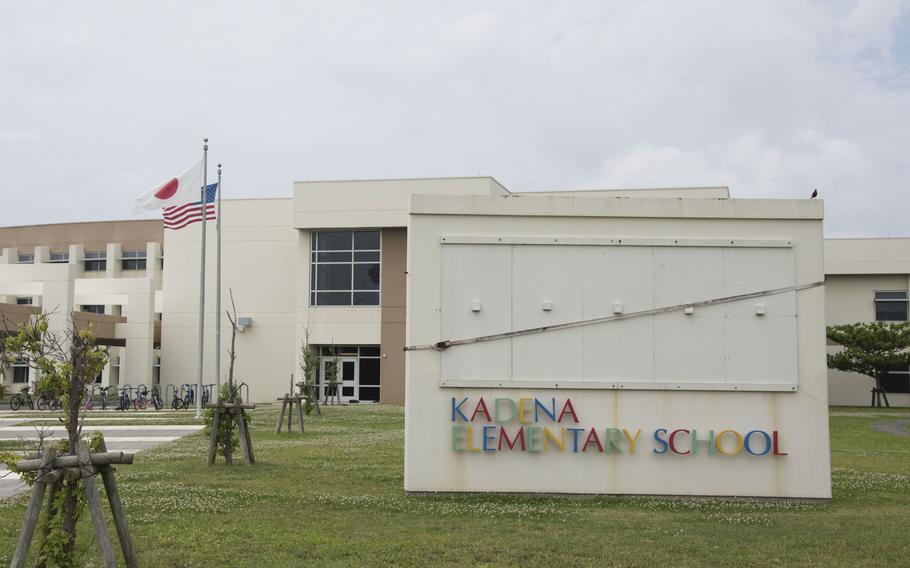
Defense Department schools on Okinawa, Japan, like Kadena Elementary School , shown here May 8, 2025, will add 20 minutes to their instructional day starting with the 2025-2026 school year, a spokeswoman said. (Keishi Koja/Stars and Stripes)
The school day at Department of Defense Education Activity schools on Okinawa will increase by 20 minutes starting with the upcoming school year, according to DODEA-Pacific.
The change amounts to approximately 58 additional instructional hours annually, according to schedules posted on DODEA’s website.
Teachers will not be in line for a pay bump for the additional hours, spokeswoman Miranda Ferguson wrote in a July 16 email. Teacher pay is based on an eight-hour duty day, and their work schedules “will continue to fall under the established paid time frame,” she said.
The extended schedule will apply to the Pacific South district’s 13 schools, Ferguson said. More than 6,000 students — the children of U.S. service members and civilian Defense Department employees — attend those schools.
The new schedule will bring Okinawa schools in line with others across the DODEA system, Ferguson said. The school day on the island had been shorter on average than those in other districts.
Emails sent July 9 to faculty, staff and parents outlined the changes, Ferguson said. The parent communication, signed by district superintendent Melissa Hayes, was posted to the schools’ official Facebook pages on July 14.
Stars and Stripes obtained a copy of Hayes’ separate email to faculty and staff.
“We recognize this increases the duty day for educators; however, research suggests this small increase in instructional time will have a great impact on student achievement,” she wrote.
The average school day on Okinawa will grow from six hours, 19 minutes to six hours, 39 minutes. By comparison, the average school day on Japan’s main island of Honshu is six hours, 35 minutes, while schools in South Korea and Guam average six hours, 36 minutes, Ferguson said.
At Kubasaki and Kadena high schools on Okinawa, the school day will stretch to seven hours — 10 to 30 minutes longer than other area high schools, according to schedules posted on DODEA’s website.
“Each school’s administration team will determine the best use of the additional instructional time based on their school’s needs,” Ferguson said.
Students will continue to be released one hour early on Tuesdays for teacher collaboration time, when educators “evaluate student data to inform instructional decision-making,” Ferguson said.
Child development centers, school-age caregivers and youth sports programs were notified of the change, she added.
The decision violates the collective bargaining agreement between DODEA and the Federal Education Association requiring that duty hour changes be negotiated with the union, an Okinawa teacher said by phone July 22.
The teacher spoke on condition of anonymity out of fear of retaliation from DODEA.
The 2025-26 school year includes 175 instructional days for Pacific schools, according to DODEA’s website. Additional instructional time will be about 58 hours in the school year, which would be unpaid, the teacher said.
“I hope [DODEA] will take the long view — the appropriate view — that we are here to help and educate children,” the teacher said. “We should not be making teachers work more, and especially we should not be making them work more for no pay.”
On May 5, the union sued President Donald Trump and Defense Secretary Pete Hegseth, challenging a March 27 executive order that the union says illegally stripped it and two affiliated unions of collective bargaining rights.
A representative for the Federal Education Association declined by email July 26 to provide a response on the record about the 20-minute school day extension on Okinawa.